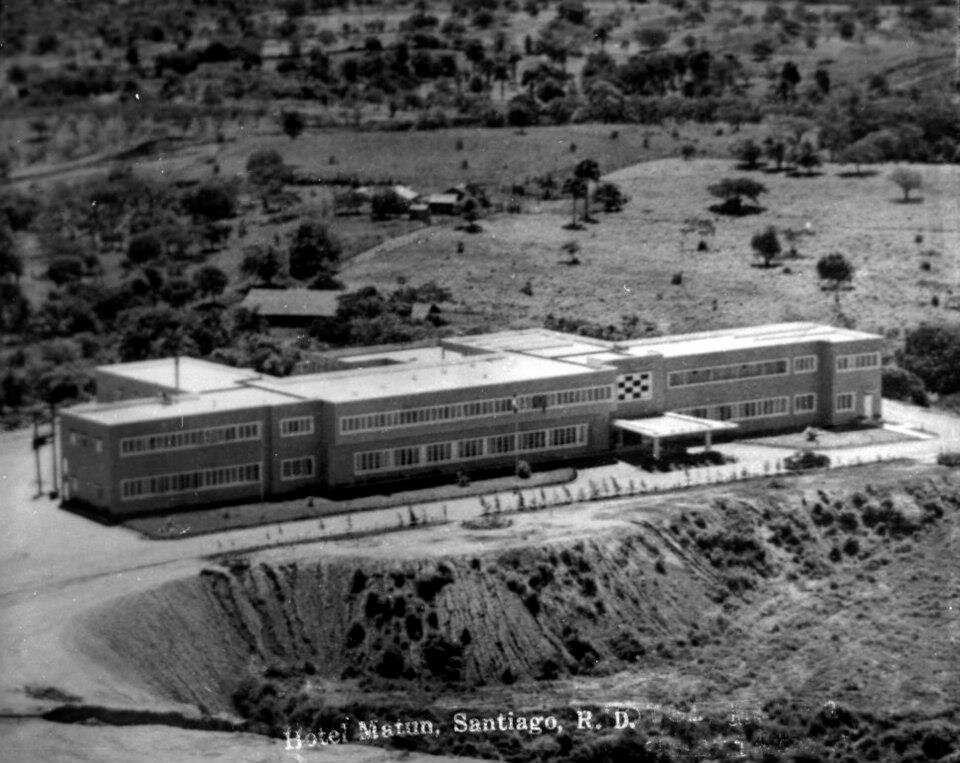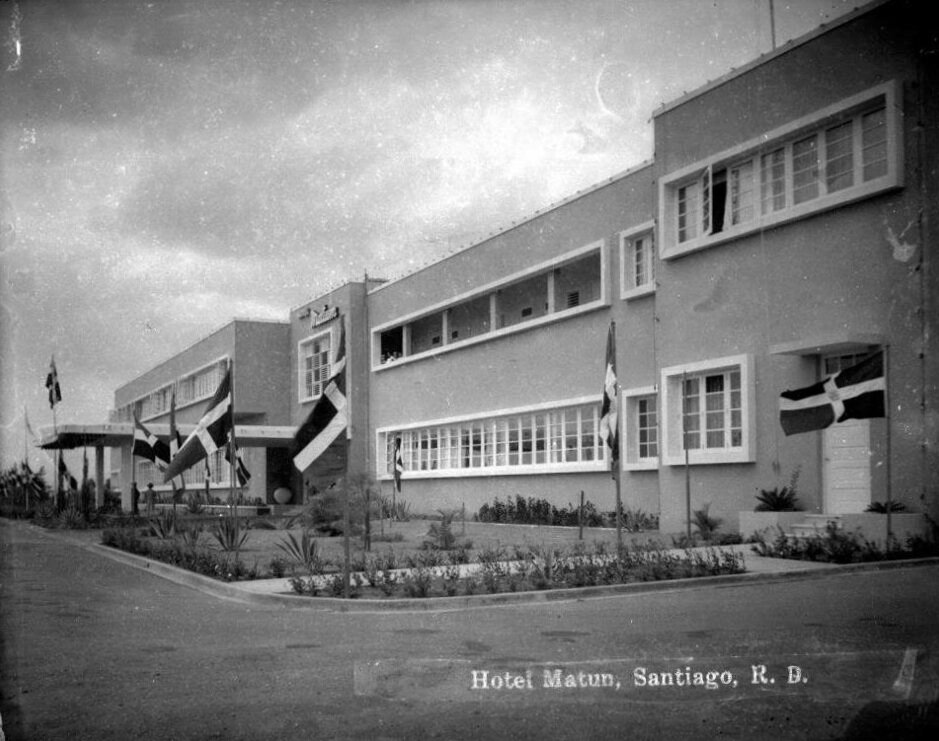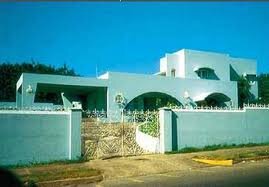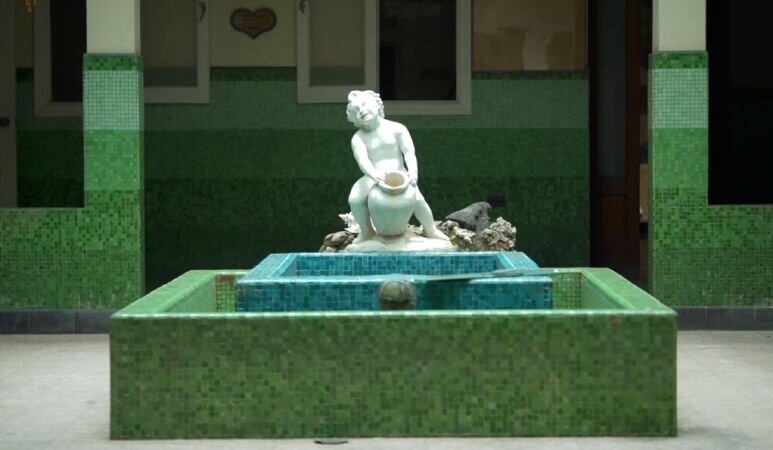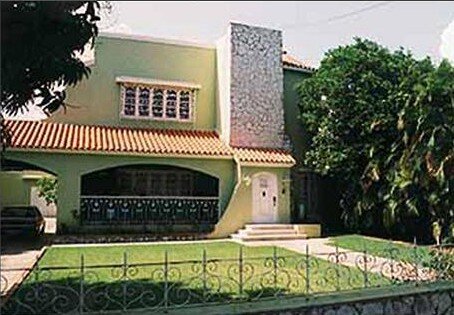Episode 11: Margot Taulé
Margot Taulé was the first woman to become a registered engineer and architect in the Dominican Republic. She was born on August 30, 1920, in Santo Domingo, Dominican Republic. In 1944 she received an Engineer-Architect Degree from the University of Santo Domingo, today the Autonomous University of Santo Domingo. A year later she became a professor at the university. In 1948 she became the first woman to be a registered Engineer and Architect in the country. Under Henry Gazón Bona she worked on Hotel Maguana and Hotel Matum. In 1948, she worked on the Munne Residence in Gazcué, it is famously known as the ‘Blue House’ and an icon in Gazcué. She was a consultant for the structural development of the Fair of Peace and Fraternity of the Free World in the Dominican Republic in 1955. Throughout her career, Margot worked with many leading architects in the Dominican Republic such as Leo Pou and J. A. Caro Álvarez, and Guillermo Gonzalez. In 1966 Margot along with other professors founded the National University Pedro Henríquez Ureña. During her years in the university, she became the first woman to be dean of an architecture program in the country. She was President of the university from 2002 to 2004 making her the first and only woman to have this post at the University. After a long life of hard work and many achievements, Margot passed away on June 11, 2008.
Caryatid: Gloria Kloter, AIA
Gloria Kloter is a registered Architect and Interior Designer from the Dominican Republic and the State of Florida. She graduated from the Autonomous University of Santo Domingo. Gloria has been published and invited to be a speaker at numerous events to share her journey as a foreign architect becoming licensed in the United States. She is an Associate Director of the AIA Tampa Bay. She founded the new Women in Architecture and Young Architects Forum Tampa Bay committees, and she is the Chair of both..
-
This transcript was prepared during the development of the episode.
Final recorded episode may deviate slightly from the content presented below as changes, edits, or improvements may be made during the recording and editing process.
Norgerie: Hola! Welcome to season two of She Builds Podcast, where we share stories about women in the design and construction field, one lady at time. This season we’re going internacional. All of the ladies of our second season will be from all over the globe.
Jessica/Lizi: Woo
Norgerie: One more thing before we start; we just want to thank all a y’all for all the support you have shown us. All the emails, the comments, the suggestions, the words of encouragement I can’t tell you how much that means to us. Please keep it up #LoveLanguageWordsOfAffirmation
Jessica/Lizi: We love you listeners!
Norgerie: Ok, today we’re gonna talk about Margot Taule, the first woman to become a registered engineer and architect in the Dominican Republic. I’m Norgerie Rivas studying for the Architecture Registration Examination in Houston Texas.
Jessica: Hi, I’m Jessica Rogers sheltering in place out of Washington DC
Lizi: Hi, I’m Lizi Raar, newly 30 in San Francisco.
Jessica: Like always our quick disclaimer. The three of us are not historians, nor are we experts on this subject. We are just sharing stories about the information that we find about each woman. If we get our facts a little mixed up, please forgive us, leave us a comment and we will all continue learning.
Norgerie: All right let's start. Today’s episode is extra special to me.
Lizi: Because we’re talking about a caribeña?
Norgerie:Yeah we are! You ready?
Jessica: As we’ll ever be
Norgerie: The time was August 30, 1920, the place, Santo Domingo, Dominican Republic. Rose Margarite Taulé Casso was born, Margot Taulé for short. Her parents were Jules Eugene Taulé Garnier and Mercedes Cassou Gil descendants of French immigrants. Margot was the youngest of five children, she had two brothers and two sisters.
Jessica: Oh French immigrants, I know Haiti was colonized by France but wasn’t the Dominican Republic colonized by Spain?
Norgerie: Yes, but hmmm there is a really long history between Haiti and the Dominican Republic, in short I’ll tell you that Margot’s family probably had nothing to do with that, they moved to the Dominican Republic because they had ties to banking and telegraph companies .
Lizi: Well for quick context, Haiti and the Dominican Republic are two different countries that are on the same island, Hispañola.
Jessica: Yeah, the Dominican Republic is Puerto Rico’s neighbor to the left and Haiti is Cuba’s neighbor to the right. The Dominican Republic and Haiti and pretty much all the Greater Antilles (which also includes Cuba, Jamaica, and Puerto Rico) have a rich, very complex history that can be studied through their architecture of indigenous, colonial and contemporary time periods.
Norgerie: Very true. You know something that is really powerful about our profession is how much you can tell about an era and a society only by looking at the built environment. We actively contribute to that story.
Lizi: For sure, when you think about European cities, versus the east coast of the US and the moving west, you can see the progression of time/lifestyle/design eras through the architecture. Even within a city itself, as you move from the city center outward, you can see a progression based on the time buildings were built as the city expanded.
Jessica: Right and you can see it in the evolution of architecture and how it deals with what was going on. Like for example, in Europe the Romans and Greeks influenced architecture and is reflected in the time period or era of classicism, that later evolved to Rococo and then to neo classicism. But then decor got a little too crazy and then with things like wars and great depression and government propaganda got up in there. Then it was like “woah cogelo con take it easy” and we get Modernism and Brutalism architecture. And then with the rise of technology and the space wars we get futurism, googi architecture, contemporary the list can go on and on
Lizi: Yeah, even today, you can see things changing with conversations that are happening between designers and architects about the built environment and how it relates to our response to climate action and social justice. And even in response to social issues like border control, immigration, and even spatial design in response to COVID -19.
Norgerie: Yes, this is all part of what makes our jobs so unique and important. Well Margot was certainly someone who contributed to the story of her country and I will tell you how and why. While Margot was not the first woman to graduate from architecture in the Dominican Republic she was part of the group of pioneers of the profession for women.
Jessica: Who was the first?
Norgerie: That title belongs to Francisca Angélica Romero Beltré. She was not only the first woman, she was the first person to graduate with an Engineer-Architect degree from a university in the Dominican Republic on October 28, 1941.
Jessica: Oh wow, both degrees that is.
Norgerie: Yeah, well at the time in the Dominican Republic the degree was both Engineering and Architecture. Today they are separate degrees.
Lizi: That’s so awesome that the first person to graduate with that degree was a woman! Love hearing that.
Norgerie: Right, I think now is a good time to give you a Fun Fact.
Norgerie: Did you guys know there is a World Architecture Day?
Lizi: Nope
Jessica: Yeah isn't it March?
Norgerie: It's the first Monday of October to coincide with with UN's World Habitat Day
Lizi: Cool! Well we all know October is the best month...
Norgerie: Debatable. You wanna be starting something.
Jessica: Rhythm is gonna get ya…
Norgerie: What? That’s a different song Jessica.
Jessica: Oh I was just following the music
Norgerie: Ok, so there is World Architecture Day but what's even cooler is that the Dominican Republic has a National Architect Day. We have a whole day you guys!
Jessica: whaaaat??!
Lizi: Woahhhh
Norgerie: They celebrate it on November 3rd because that was the birthdate of the famous Dominican Architect Guillermo Gonzalez, he graduated from Yale University and he is known as a prominent figure of modern architecture in the country. Which is super cool and extremely important, but part of me wishes they would celebrate it on October 28 to celebrate the first person who became an architect in their country, who just happened to be a woman.
Jessica: Well we can probably figure out why they chose Guillermo over Francisca?
Lizi: mmhmmm grunt of some kind
Norgerie: Well, Margot studied a few years after Francisca, from 1940 to 1944 the same degree from the same University, the University of Santo Domingo, which today is known as the Autonomous University of Santo Domingo. It was the only university in the country that offered that degree at the time. In 1945 she became a professor at the university. And in 1948 she became the first woman to be a registered Engineer and Architect in the country.
Lizi: So cool! Are there special requirements, or what was the process to become licensed? Did she have to take tests?
Norgerie: Good question. Ok, today to become a licensed architect in the Dominican Republic you have to work at least a year under a registered professional and then you can apply for the license with the Dominican College of Engineers, Architects, and Surveyors.
Jessica: So in a way it's kinda similar to us, but they don’t need to take tests like we do. But did they require an architecture degree?
Norgerie: From what I could gather, it is. So, the College did not exist under the law until 1963. Before that they were the Association of Dominican Engineers and Architects. They formed in 1945 in an attempt to give structure to the profession in the country and to represent and protect the rights of these professionals. I am not sure what the requirements were at the time for Margot to join them. I just know she was registered in 1948, I bet she had to work under another professional for sometime, because that is what she did.
Lizi: Gotcha
Jessica: interesting
Norgerie: In fact, two years before she was registered she worked with the architect Henry Gazon Bona on Hotel Maguana in the city of San Juan de la Maguana. This project is described as a modernist building very sober and linear. Then in 1948 with the same architect she worked on Hotel Matum in Santiago which was originally called Hotel Marien. Now I didn't find pictures of Hotel Maguana, but the pictures of Hotel Matum look very similar in style as what is described of Hotel Maguana, very sterile, a long linear box of a project. Some people might look at the project and think it's boring, but the pictures show it on top of a hill and I say it has presence.
Jessica: I suppose like we mentioned before that style of architecture was very consistent especially if it was designed by the same architect.
Norgerie: That same year, 1948, she worked on the Munne Residence. It's an ICON in the neighborhood of Gazcue in Santo Domingo. Gazcue used to be a very fancy area where the upper class lived and Casa Munne was built on a property that was 3,200 square meters which is about a little more than 34,400 sf.
Jessica: oh wow that’s big
Norgerie: Yeah very, the house didn't take up the whole property but it was a very big house for the five members of the Munne Taule family.
Lizi: Wait, Munne Taule? Was this her house?
Norgerie: Her sister’s, Jeanne Mélanie
Jessica: oh but we can assume her family is loaded?
Norgerie: Well I looked them up. Margot’s brother in law, the owner of the house was a Spanish immigrant, along with his brother and cousin, he started the Munne & Co in the Dominican Republic. They were involved with exporting all sorts of goods, grain, coffee, corn, honey, rice, cocoa they were all over the place and it paid off.
Jessica: yep, that definitely sounds like that they had money
Norgerie: A little more info about the Munne house, it has two floors. The sister chose the color blue for the facade and it's been the same ever since, it's known as the Blue House. The house is this very nice balance of the modern works Taule did, with colonial motifs, Art nouveau staircases, interior and exterior gardens, a courtyard, it even had a gallery for the family’s art work. And her sister was very particular about everything that went in the house. I watched a short documentary of the house, which you can find in the show notes, and a person that knew her, was like everything in there was premeditated to go with the architecture of the house, artwork is not hung up like crazy people, no, it's exactly the right place, color, proportions, all the furniture it was very conscientious of the special architecture of the house.
Lizi: It sounds beautiful. I love when you can design a space for what is going to be inside it as well. Interiors can affect architecture as well the other way around, so thinking through what will go into the space or furnish it can really round out a design.
Norgerie: Yeah, I really encourage listeners to watch the documentary. It's on the show notes. It's very short, like less than 5 minutes. It's in Spanish, but even if you don’t know the language you can appreciate the architecture, the spaces, and the details of the house.
Jessica: I know I will
Lizi: Me too!
Norgerie: So yeah, I was telling you that the Gazcue area used to be a high class place to live, but it's fallen out of grace. A lot of government buildings were constructed there so the zoning changed from residential to include commercial. The kids of the wealthy people started moving to other places and little by little the area has been in decline.
Lizi: sad
Jessica: #urban plight or the opposite of gentrification is what it sounds like to me
Norgerie: The really sad part is, that when Margot’s sister passed away in the 2000s the house joined the rest of the Gazcue area in decline. The good news is in 2017 the house was bought by the Central Bank of the Dominican Republic and the hope is that they will restore it and turn parts of it into a museum.
Jessica: That’s really cool. This can definitely be a tourist attraction that I would love to visit. I always thought the tourist attraction for the Dominican Republic would be their beaches, music, and food… but as an architecture nerd I have to see this house.
Lizi: Agreed, I love seeing architecturally significant houses that have been restored.
Norgerie: Well their motives for buying the house are not super altruistic. The Bank’s location is very close to the house and their biggest concern seemed to be if another developer bought the property, demolished the house and turned it into an apartment or office complex that would bring more cars to the area. So basically they bought the house to avoid larger traffic jams during rush hours.
Jessica: I mean, who loves traffic?
Lizi: Sounds like a win win for everybody
Norgerie: The newspaper reported in 2017 that their plans for the house were to restore it to be among other things, an expansion of their current Museum of Coin and Stamps, a cultural events center, and the home of their Department of Systems and Technology that focuses on cybersecurity. What's up with that combination of uses?
Jessica: they are being efficient? But it sounds to me like they are trying stretch a dollar out of 15 cents
Norgerie: Lets fast forward to 1955, my dad was born, hola papá! and Margot worked on a particularly important project. She was a consultant for the structural development of the Fair of Peace and Fraternity of the Free World. This was a World’s Fair, not recognized by the Bureau International des Expositions, or BIE. I had no idea there is an organization that foresees World's Fairs, which now that I know it exists I’m like of course, I mean if not they would just sorta happen willy nilly.
Lizi: Kind of like the IOC for the Olympics. So why was this an unrecognized World’s Fair? Why did the BIE not condone it?
Norgerie: well the fair was not officially recognized because it was really a fair to celebrate the 25 years of Rafael Trujillo’s dictatorship, I guess celebrating regimes is not what the BIE was about.
Jessica: Rightfully so!
Norgerie: The fair was organized and constructed in an extremely tight timeline. They had a short timeframe to design and build 125 acres or 51 hectare of land.
Jessica: that's pretty huge
Lizi: Woah
Norgerie: Margot says she worked a lot of nights past midnight, from past experience I know that must not have been fun. Well, with all that crazy schedule in just six months a majority of the construction was completed, yet by the deadline of December 20 only two thirds of the structures and exhibitions were done. So Trujillo inaugurated it like that.
Lizi:
Norgerie: Ok, lets have in mind this context of her working so hard and these extra hours while I read you this quote from her: “Even though there was no discrimination regarding the type of work I could do, it still existed in the way they payed me. A lot of times I worked more than my colleagues and earned less… I remember on one occasion when I asked my boss what are my defects as a professional and he responded, only one, being a woman.”
Jessica: a new season, same ol B.S.
Lizi: grunt - “hombé. Que baina”
Norgerie: In total, Seventy-five permanent buildings were constructed for the fair. And at the end of the fair a lot of those were converted to be government buildings. Including one that Margot was personally involved in the structural design, it became the National Congress building and it still is today.
Jessica: adding that to the list for my archventure in the DR
Lizi: already planning our next trip…. for the day we can actually go places again
Norgerie: Throughout her career, Margot worked with many leading architects in the Dominican Republic such as Leo Pou and J. A. Caro Álvarez, and Guillermo Gonzalez who I mentioned a while back.
Lizi: Oh right, the National Architect’s Day guy.
Norgerie: Right! In 1956 Margot became a tenured professor for her alma mater the University of Santo Domingo. The university’s name changed in 1964 to be Universidad Autónoma de Santo Domingo. Apparently the name was not the only thing that changed in 1964, some professors in the university were not happy with the way it was being run and the direction it was going, so two years later a group of professors jumped ship and started their own university. Guess who was part of that group?
Jessica: Margot!
Norgerie: How’d you know?
Jessica: Because homegirl was fed up!
Norgerie: Ha! In 1966 Margot along with other professors founded the National University Pedro Henríquez Ureña. There she worked as a professor in civil engineering in the architecture and mathematics department, she was also a professor in the engineering department. During her years in the university she held positions such as Dean of the Architecture program and of the Engineering program. Actually she was the first woman to be Dean of an architecture program in the country. And she was President of the university from 2002 to 2004 making her the first and only woman to have this post at the University.
Jessica: yayyyyy
Lizi: yeah yeah yeah
Norgerie: After a long life of hard work and many achievements, Margot passed away on June 11, 2008. I really enjoyed learning about Margot because she struck me as someone who was really invested in the profession of architecture and engineering in her country, in helping it expand, and helping others do the same. I mean, I don't think you would be a professor for so many decades and even become a founder of another university if you weren't super invested in furthering the profession and being a mentor.
Jessica: we need more women like her in the profession. I think it’s one thing to have your career and to build. But for Margot to “build” something that would further the future of the profession is very impactful.
Norgerie: I would like to end her story with one last quote from her, “Although I do not rule out that there may be exceptions, I believe that we women have managed to impose professional capacity as the only criteria to measure our performance at work.”
Lizi: I wish that were true. As we talked about last season, that has not been the case for most women in the profession, but it does sound like Margot was a prominent figure in the profession in her country and that she was respected for her work.
Norgerie: I agree. Now it’s time for our caryatid! Lizi please remind us what this is.
Lizi: Sure, a Caryatid is a stone carving of a woman, used as a column or a pillar to support the structure of a Greek or Greek-style building. In each episode we present a “caryatid” -- a woman who is working today, furthering the profession through their work, and who ties in to the historical woman of our episode.
Norgerie: Drum roll please… Gloria Kloter
Lizi and Jessica: (applause) Yeay!
Norgerie: Gloria Kloter is a Dominican Registered Architect and Interior Designer in the State of Florida, and in the Dominican Republic. She and Margot share an alma mater, the Autonomous University of Santo Domingo. What drew me to Gloria as a caryatid for Margot is how invested she is in helping others advance in the profession of architecture. Gloria has been published and invited to be a speaker at numerous events to share her journey as a foreign architect becoming licensed in the United States.
Lizi: Wow, it’s such a long arduous process to get licensed in the US at all, and to do it after going through licensure in another country, and then being a non-English speaker on top of that. I can’t imagine. She is amazing.
Jessica: Yes, and I believe that Gloria runs a Facebook group specifically to aid ARE candidates where english is their second language.
Norgerie: Ohhh I’m gonna tell my husband to look into that. Also, Gloria is an Associate Director of the AIA Tampa Bay. She founded the new Women in Architecture and Young Architects Forum Tampa Bay committees, and she is a Chair of both. If that’s not enough she also volunteers in the program “Architecture in Education” which is an 8-week program where architecture professionals teach 5th grade students about Architecture.
Jessica: That is so great. I am also really glad that she founded this, more programs and committees like these can become an incredible resource.
Lizi: Yes, that sounds so fun! I would have loved that.
Norgerie: Right! Its super cute!!! So in my research of Gloria there was so much information about how helpful she is so I decided to reach out to her with a few questions I had about Margot and architecture in the Dominican Republic. After I did that I found out she had JUST become a mom, like weeks before so I figured it would take her a while to respond to me or it would get lost in her email, because you know she had a lot on her plate.
Jessica: Understandable
Norgerie: Well she totally surprised me and she reached back right away. I bombarded her with questions and she made time for me and to respond to each of them thoroughly. Thank you again Gloria it meant a lot to us at She Builds Podcast.
Lizi: Yes, and congrats on your baby girl!
Norgerie: Ok, before we sign off we want to say gracias CMYK for the music, John W our technical producer. And most of muchisimas gracias for listening! We hope you enjoyed learning about Margot and Gloria, along with our banter, and that you are inspired to find out more about them and other amazing professional ladies. Again, GRACIAS!
Jessica: Please let us know what you thought of our episode. If you’ve enjoyed it please help us spread the word. Tell your friends, your neighbors, your co-workers, give us 5 stars on Itunes, write us a review, this will all help us reach a wider audience and for more people to learn about these amazing ladies with us.
Lizi: We are excited to hear from you and for you to come back and keep learning about women bosses with us. You can email us your thoughts at shebuildspodcast@gmail.com, leave a comment on our website shebuildspodcast.com, or follow us on instagram and facebook @shebuildspodcast, and on twitter @shebuildspod. Adios, Que la pasen bien! Hasta luego, nos escuchamos JAJA
References
Aburto, Salo. “Architect Spotlight: Gloria Kloter.” NCARB - National Council of Architectural Registration Boards, 10 Jan. 2020, www.ncarb.org/blog/architect-spotlight-gloria-kloter.
Barnhorn, Alexis. “Happy International Women in Engineering Day! Here Are 10 Awesome Women Engineers in History.” CADENAS PARTsolutions, 4 Mar. 2019, partsolutions.com/happy-international-women-in-engineering-day-here-are-10-awesome-women-engineers-in-history.
Derby, Lauren. “The Dictator’s Seduction: Gender and State Spectacle during the Trujillo Regime.” Callaloo, vol. 23, no. 3, 2000, pp. 1112–46. Crossref, doi:10.1353/cal.2000.0134.
“Gascue En El Olvido | El Nacional.” El Nacional, 15 Mar. 2020, elnacional.com.do/gascue-en-el-olvido.
“La Primera Persona Graduada de Arquitecto En República Dominicana.” Imágenes Dominicanas, 15 Nov. 2018, idominicanas.com/la-primera-persona-graduado-de-arquitecto-en-republica-dominicana.
Moisset, Inés. “Margot Taulé 1920-2008.” Un Día | Una Arquitecta, 1 Apr. 2015, undiaunaarquitecta.wordpress.com/2015/05/26/margot-taule-1920-2008.
NOTICIAS UNPHU. “Nuestra Ex-Rectora Margot Taulé Casso: En Paz Descansa.” Universidad Nacional Pedro Henríquez Ureña | UNPHU, UNPHU, 2008, noticias.unphu.edu.do/noticias/nuestra-ex-rectora-margot-taule-casso-en-paz-descansa.
Wikipedia contributors. “Margot Taulé.” Wikipedia, 19 Mar. 2020, en.wikipedia.org/wiki/Margot_Taul%C3%A9.
Images (in order of appearance):
Rose Marguerite (Margot) Taulé Casso. Digital Image. Revista Arquitexto. 2019 https://gramho.com/media/1995097178024307663 28 Oct 2020.
Moisset, Inés. Margot Taulé y Henry Gazón Bona, Hotel Matun. Digital Image. Un día una arquitecta. 2015. https://undiaunaarquitecta.wordpress.com/2015/05/26/margot-taule-1920-2008/ 28 Oct 2020.
Moisset, Inés. Margot Taulé, Casa Munné. Digital Image. Un día una arquitecta. 2015. https://undiaunaarquitecta.wordpress.com/2015/05/26/margot-taule-1920-2008/ 28 Oct 2020.
Morel, Diana. El Tono Azul de la Modernidad Dominicana. Digital Image. Fundación Arquia. 2017. https://fundacion.arquia.com/eu-es/mediateca/filmoteca/p/Documentales/Detalle/355?novedad=1 28 Oct 2020.
Maldonado, Persio. Congreso Nacional. Digital Image. El Nuevo Diario. 2020. 28 Oct 2020
Moisset, Inés. Margot Taulé, Casa Santos. Digital Image. Un día una arquitecta. 2015. https://undiaunaarquitecta.wordpress.com/2015/05/26/margot-taule-1920-2008/ 28 Oct 2020.


